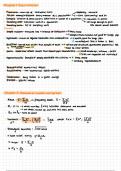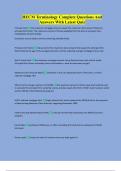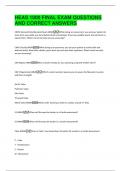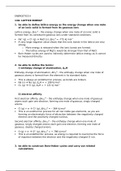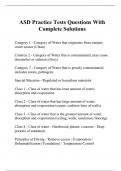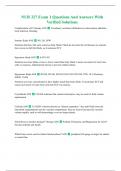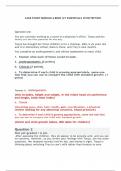Viscosity
“Viscosity is measured by the ratio of the force required in order to overcome
internal friction between layers of fluid (shear stress) to the change in speed
between layers of fluid (this is known as the velocity gradient) “(Antylia Scientific
Blog team, 2017).
Introduction
Viscosity is a fundamental characteristic property of all liquids; when a liquid
flows, it has an internal resistance to flow (Dabir S. Viswanath, 2007). Fluid is a
word that means either a liquid, gas or something that can flow; the force
depends on the thickness or viscosity of the fluid. Viscosity is the resistance of a
fluid flow present in a viscous fluid, the meaning of this is that the fluid has a
higher resistance to flow; this type of resistance is due to the frictional forces
between molecules within the fluid (CGP, 2018). Viscosity describes how a fluid
resists the forces more specifically shear forces; a shear force is a force acting in
a direction that’s parallel (over the top of) a surface (Elsevier, 2021). The word
shear references to the fact that such a force can cut or “shear” through the
surface or of an object under strain. Since fluids are composed of many
molecules, that are constantly moving, the molecules exert a shear force on one
another (Pearson Education chapter 2, 2008). Under conditions, one fluid offers
great resistance to flow than another. Liquids such as tar, honey, and corn syrup
cannot be quickly poured or easily stirred, and they are commonly spoken as
being “thick”, on the other hand liquids known as “thin” such as water, petrol,
and vegetable oil flow much more easily. Within liquids the motion of fluid all
particles are moving in the same direction, but different layers of fluid move with
different rates, therefore one layer moves in relation to another (Lumen
Learning, 2021).
According to Maheshwar (2018) due to viscosity describing fluids internal
resistance it is thought of a measure of fluid friction. For certain liquids viscosity
is a material constant that depends on the temperature and pressure. measuring
viscosity is an effective way to know the state (properties of matter) of fluidity of
a liquid. Measuring viscosity plays an important role in the quality control and in
various research and development stages of a wide range of industries,
including:
- Food.
- Chemical.
- Pharmaceutical.
- Petrochemical.
- Cosmetics.
- Paint.
- Ink.
- Coatings.
- Oil.
- Automotive.
(M. Maheshwar, 2018).
Almost all liquids are viscous fluids having viscidity. An example of this is when a
rotating drum container filled with filled with water on its vertical central axis,
, A: Undertake a literature search and review to produce an investigative project proposal.
the water that was at rest in the beginning starts moving as it is dragged by the
container inside wall and then turns completely together with the container as if
it were a single firm body. This is caused by the resistance generated in the
direction of flow on the surfaces of the water and in the containers inside wall; a
fluid that generates this kind of force is considered as having viscosity (Stephen
Richard, 2013).
Viscous fluids are divided into two broad categories:
Newtonian fluids- viscosity is constant regardless of the flow.
Non-Newtonian fluids- viscosity changes according to the flow.
(RheoSense, 2021).
Who invented the term viscosity?
Jean Léonard Marie Poiseuille focused on medicine and in 1828 he focused on the
dissertation featured in the invention of a device known as the U-tube mercury
manometer. This was used to measure the blood pressure of dogs and horses.
Poiseuille focused on the blood flow throughout his career, and he created an
apparatus made of glass tubes that could be heated and cooled to experiment
with liquids of altering thickness. He then discovered that the tube pressure,
temperature, diameter, and length all effected viscosity (Christina Lee, 2017).
Research about tomato ketchup for project experiment:
Tomato ketchup is a sauce used as a condiment and is typically made from
tomatoes. It contains sugar and vinegar. It is assorted with seasonings and
spices, and it has solid and liquid parts within it and is a viscous mix (Denise
Tieman et al, 2017). Ketchup is known as a thixotropic fluid, this means that the
liquid becomes less viscous (thinner and flows more easily) when shaken,
agitated/ stressed, or stirred, but the fluid then recovers to its original viscosity
in a fixed time once the shear forces have been removed (Corrosionpedia, 2021).
The bottom part of the mass, which is viscous at rest, sits on a solid base and is
held there by sticking together or other forces, whilst the upper layers are
situated in a parallel direction. In Newtonian fluids viscosity is independent of the
pressure being applied to the fluid; however, in this case with ketchup, non-
Newtonian fluids the situation is different, where a stronger force reduces the
viscosity. This behaviour is known as shear thinning and is caused by polymers
that are added to the sauce (concoction of tomato paste, sugar, and other
ingredients) in the form of a thickener. Polymers are microscopic complex
molecules composed of long chains of atoms, which become intertwined and
release energy into their surroundings. In this situation the polymer is soft and
viscous, applying a sufficiently large shear force; however, it provides the energy
needed to stretch the polymer molecules out and align them lengthwise. The
chains slide easily past one another, and the result is reduced in viscosity. Once
the shear forces have subsided and the ketchup is allowed to settle the polymer
molecules become intertwined again and release energy. This process takes


